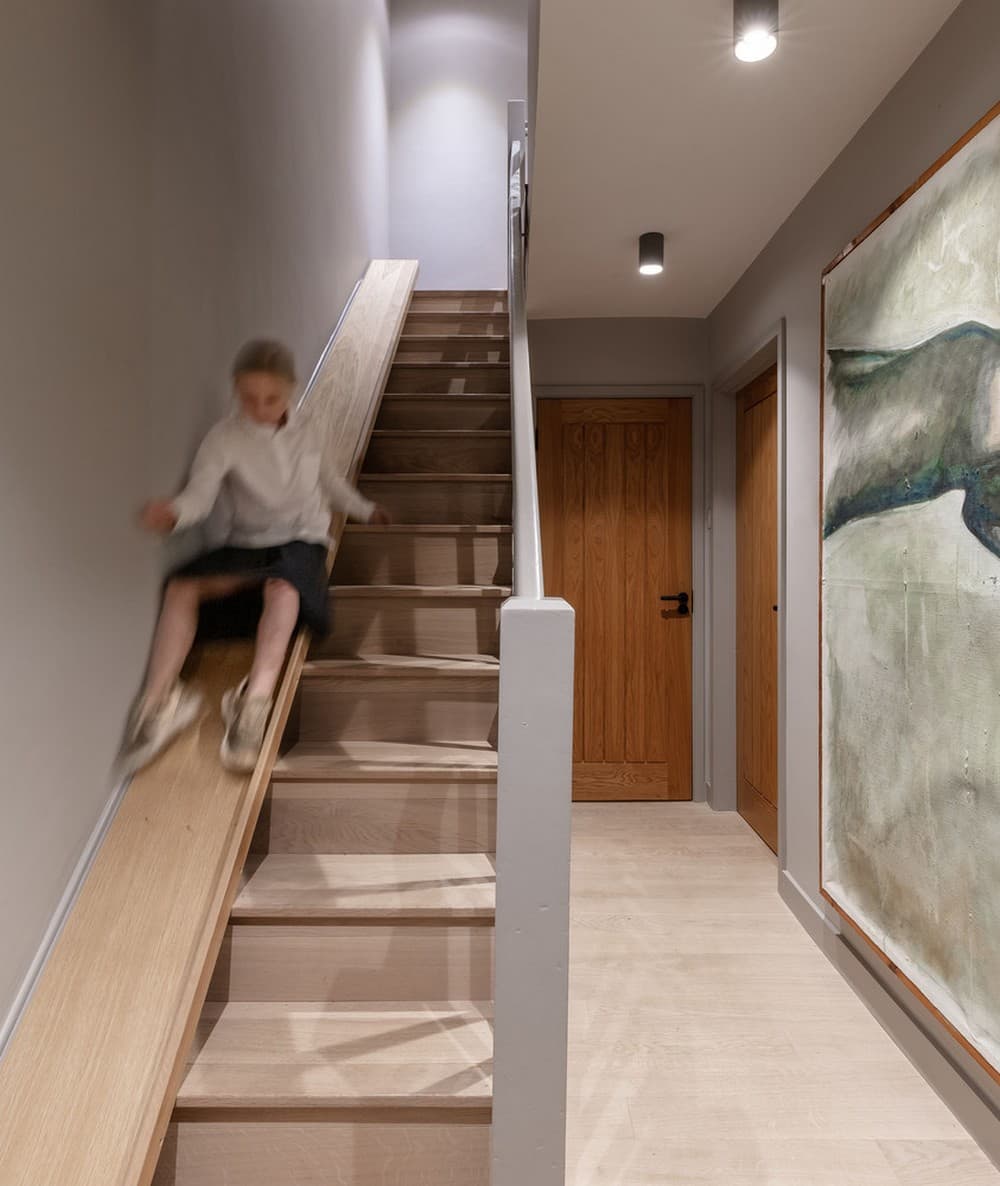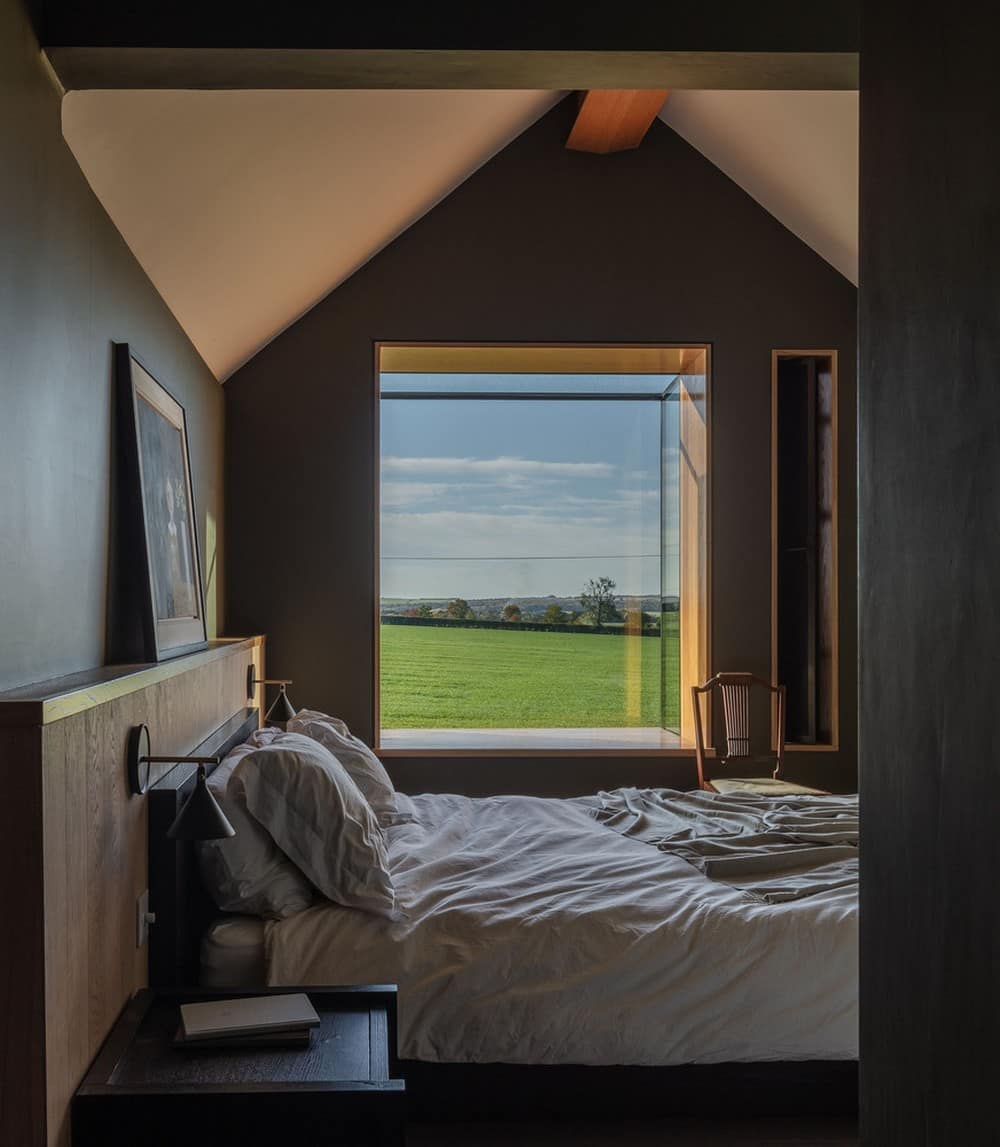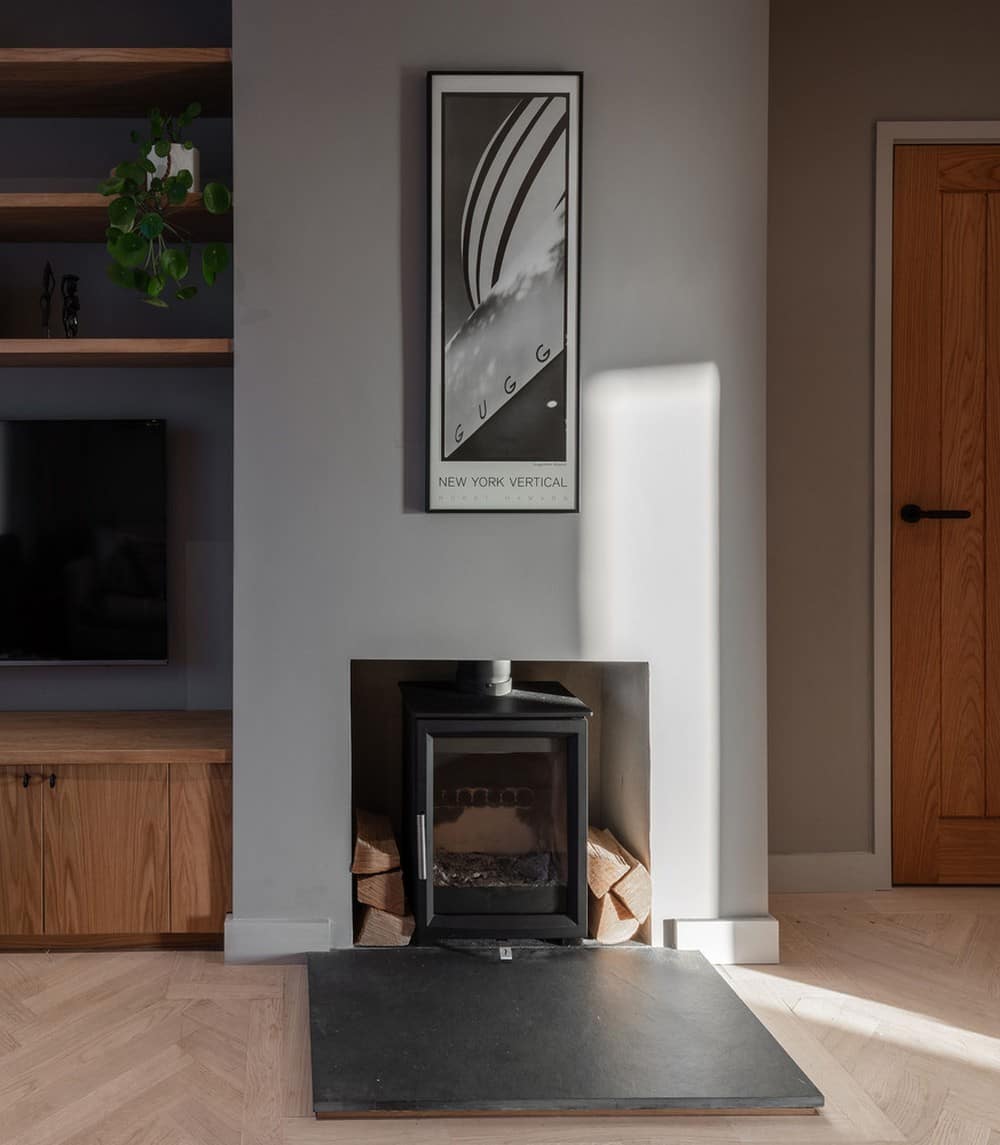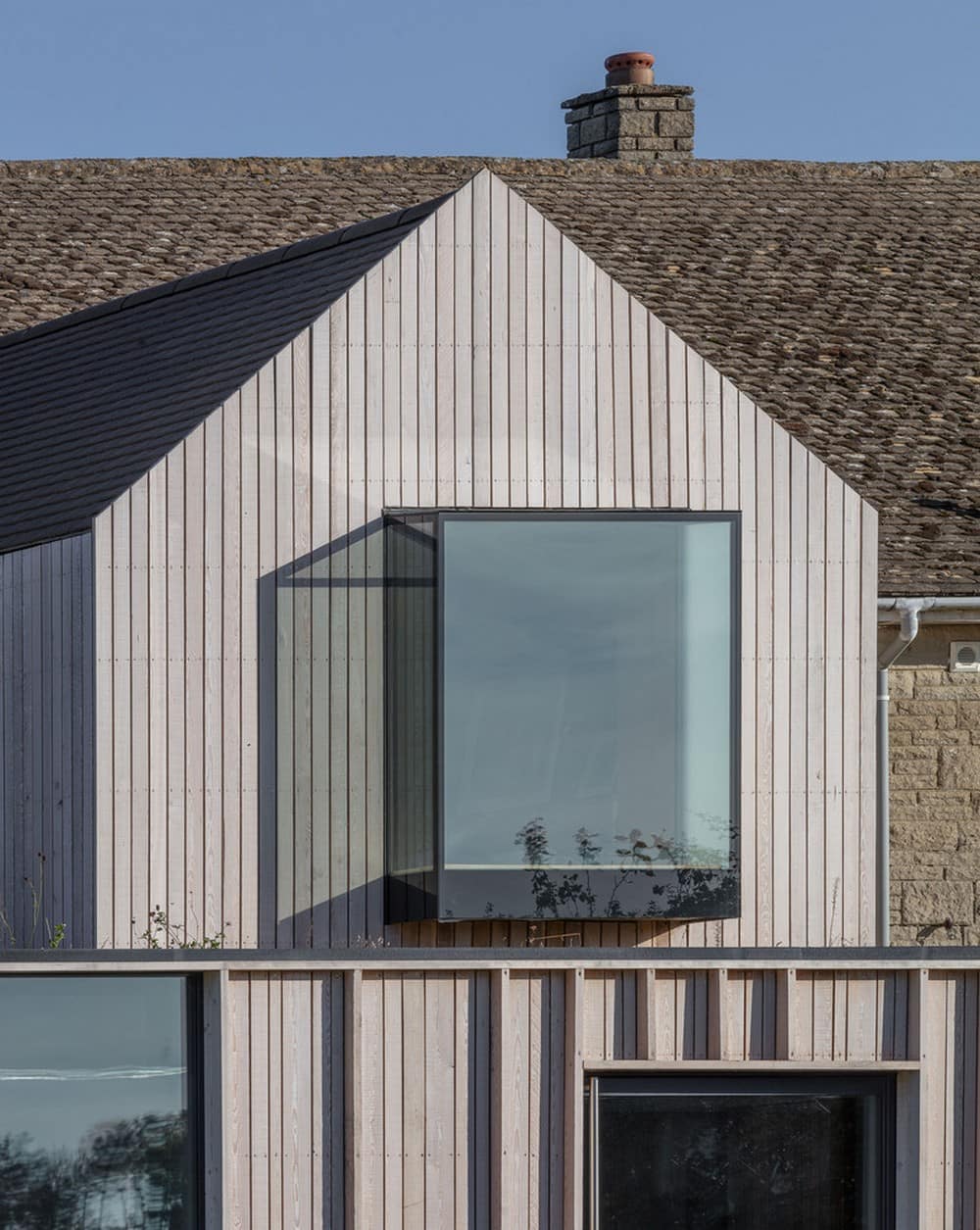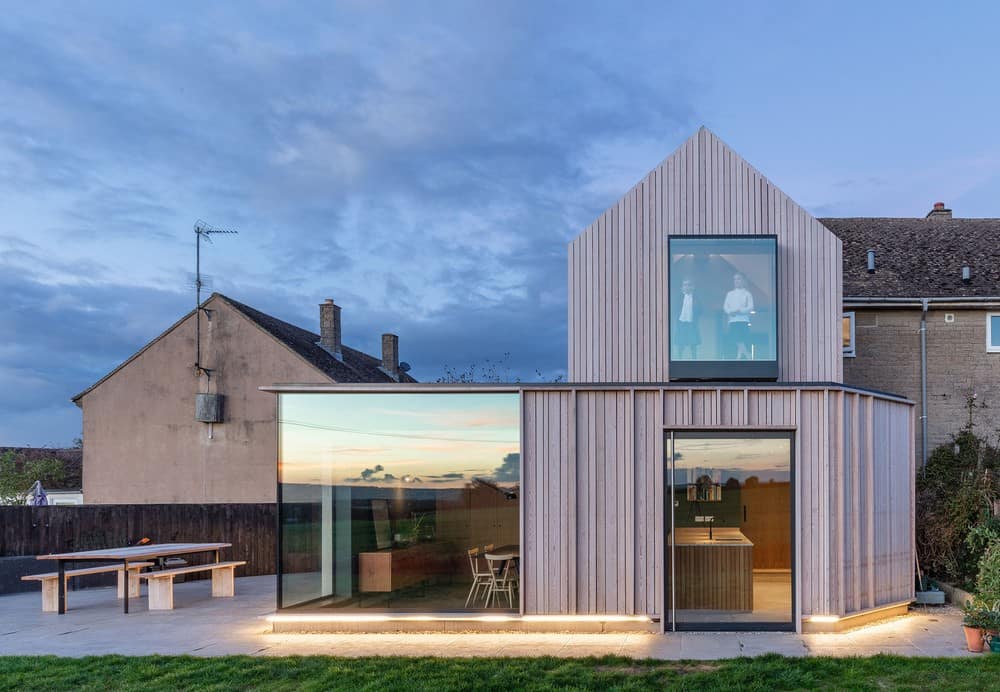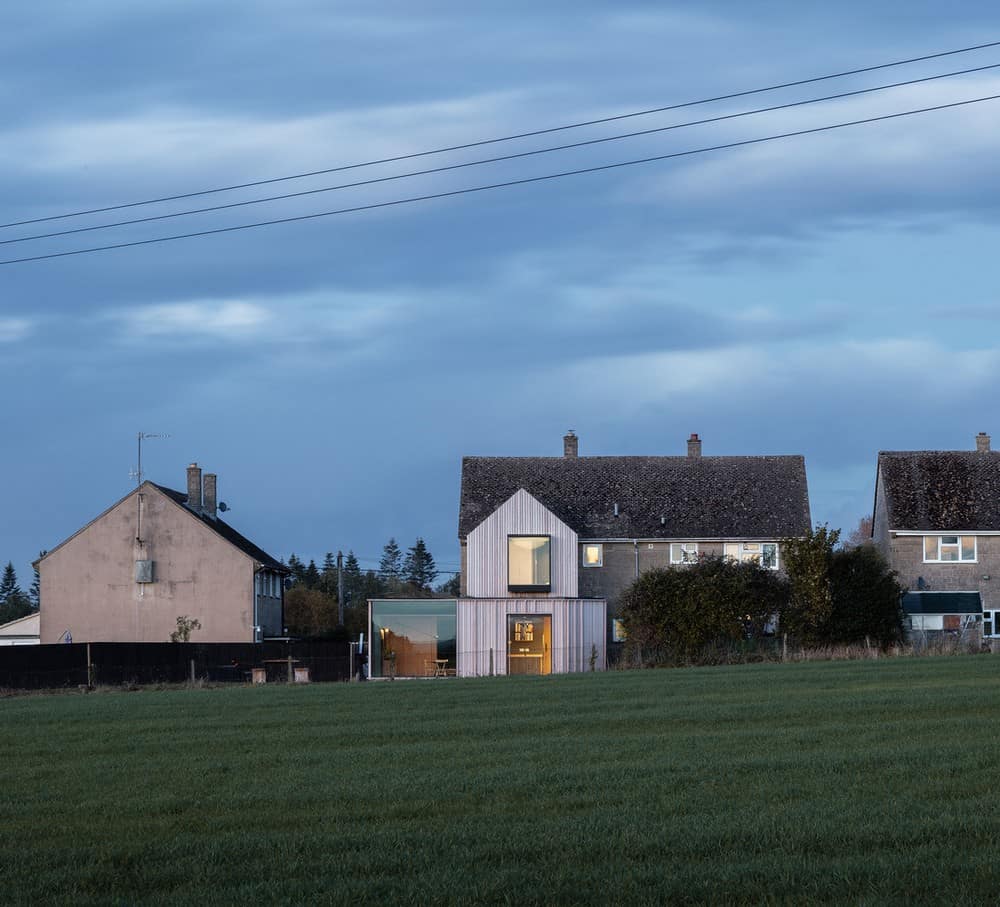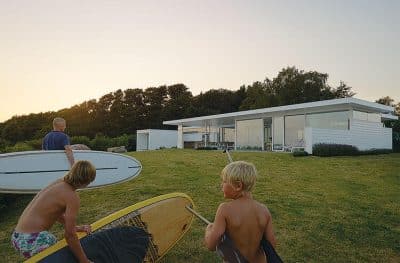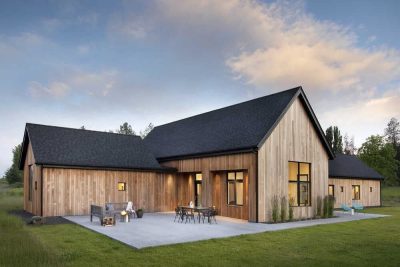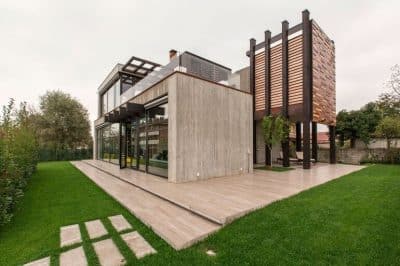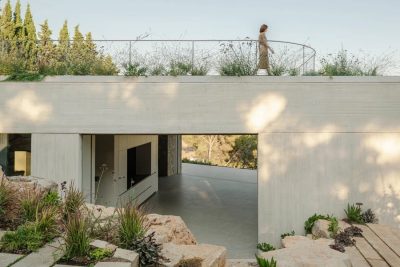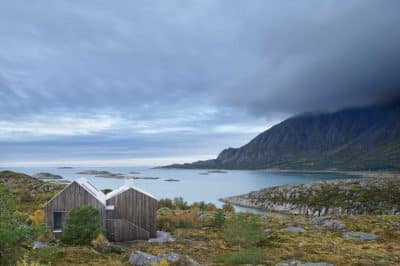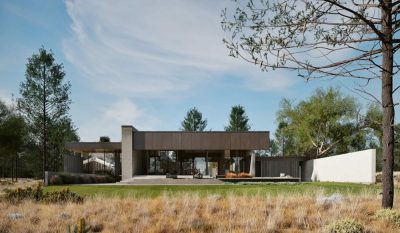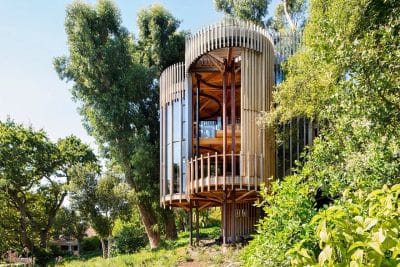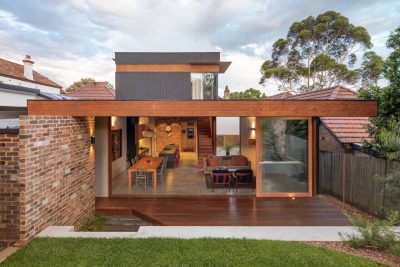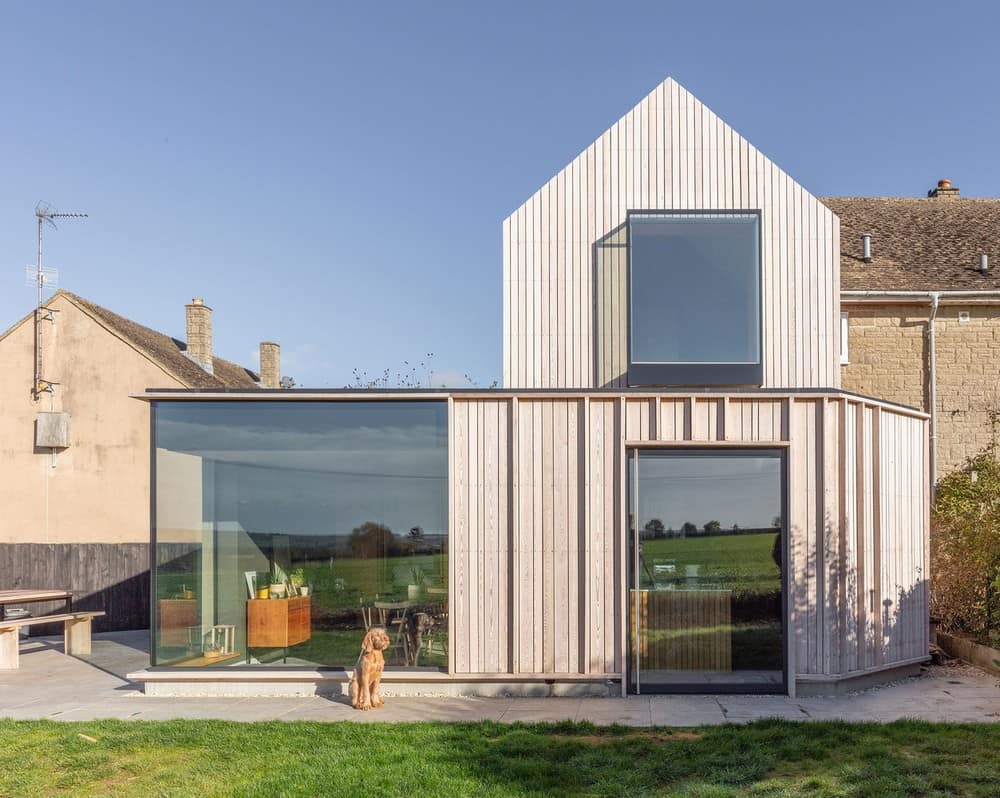
Project: Corner View House
Architects: Freehaus Design
Architecture: Tom Bell
Contractor: Tim McKibbin
Location: Churchill, United Kingdom
Area: 130 m2
Year: 2021
Photographs: Nicholas Worley
Corner View House was built by Architect and Certified Passivhaus Designer Tom Bell for his partner Sophie Bell managing director at the creative agency Toast and their family Isla (7yrs) and Ada (5yrs) and their dog Woody. Corner View House reimagines an orthodox 1960’s local authority house to deliver a contemporary family home in the Cotswolds, where ex-council properties are often overlooked and undervalued.
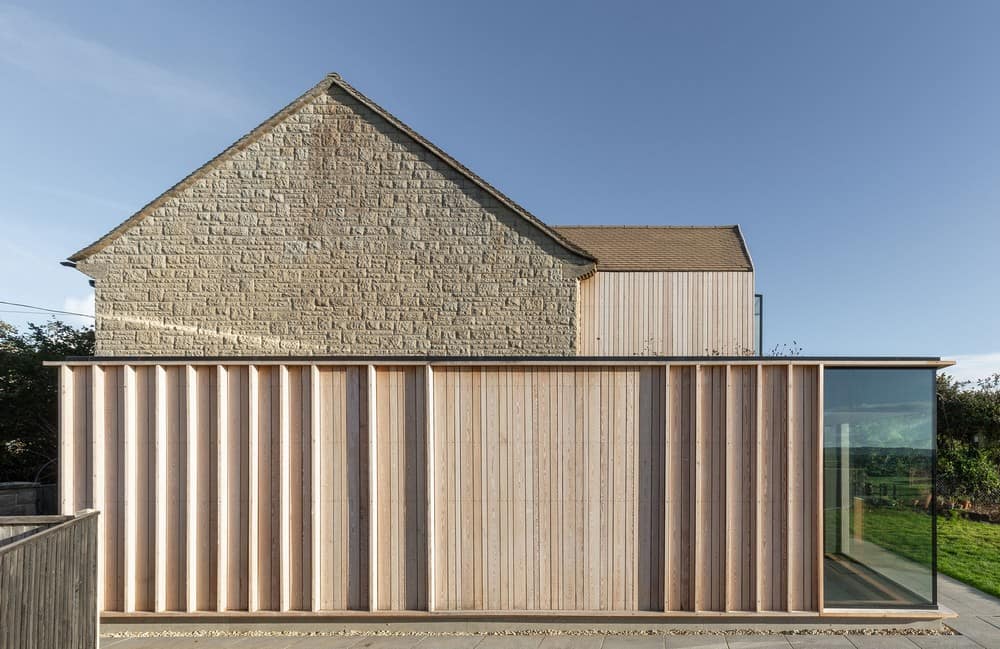
The project challenges these preconceptions and explores and unlocks the adaptive flexibility inherent within our rural post-war, social-housing stock, to champion the importance of retrofit. Wrapping the property in a contemporary timber extension afforded an opportunity to upgrade the environmental resilience of the house through the application of Passivhaus fabric first principles and by using modern methods of construction. The design elevates and enriches the existing envelope, whilst remaining sensitive to the local Conservation Area and context of the AONB.
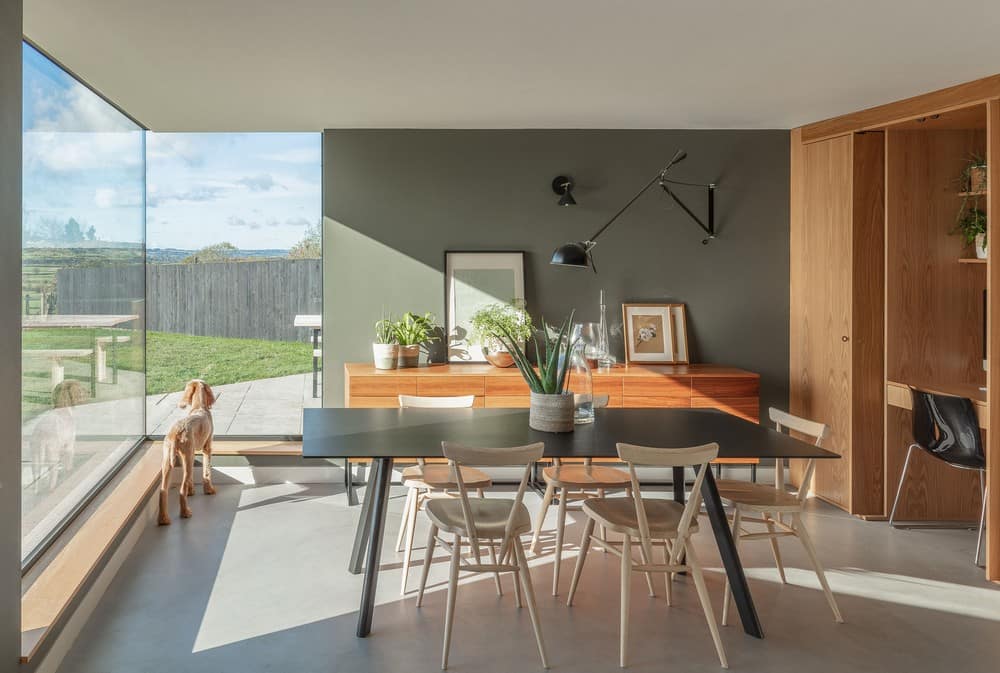
To accelerate the program and ensure quality control, the extension was fabricated off-site using SIP technology. Working in collaboration with the engineers on a shared computer model, it was possible to fabricate the windows, doors, and structural shell simultaneously while the foundations were poured on-site, achieving water tightness within weeks. The high insulative and airtight values of SIPs within the structural zone maximize internal floor space and ceiling volume (see the master bedroom). Glulam beams complement the SIP technology and reduce thermal bridging.

They have been used to support the large corner window opening. Internally, the aspiration was to reconfigure the existing layouts to create a series of fun and adaptable family spaces, whilst accommodating private niches for home-working and respite. The extension houses a large open-plan kitchen, living space, and new informal entrance, visually connecting the communal areas with the adjacent fields.
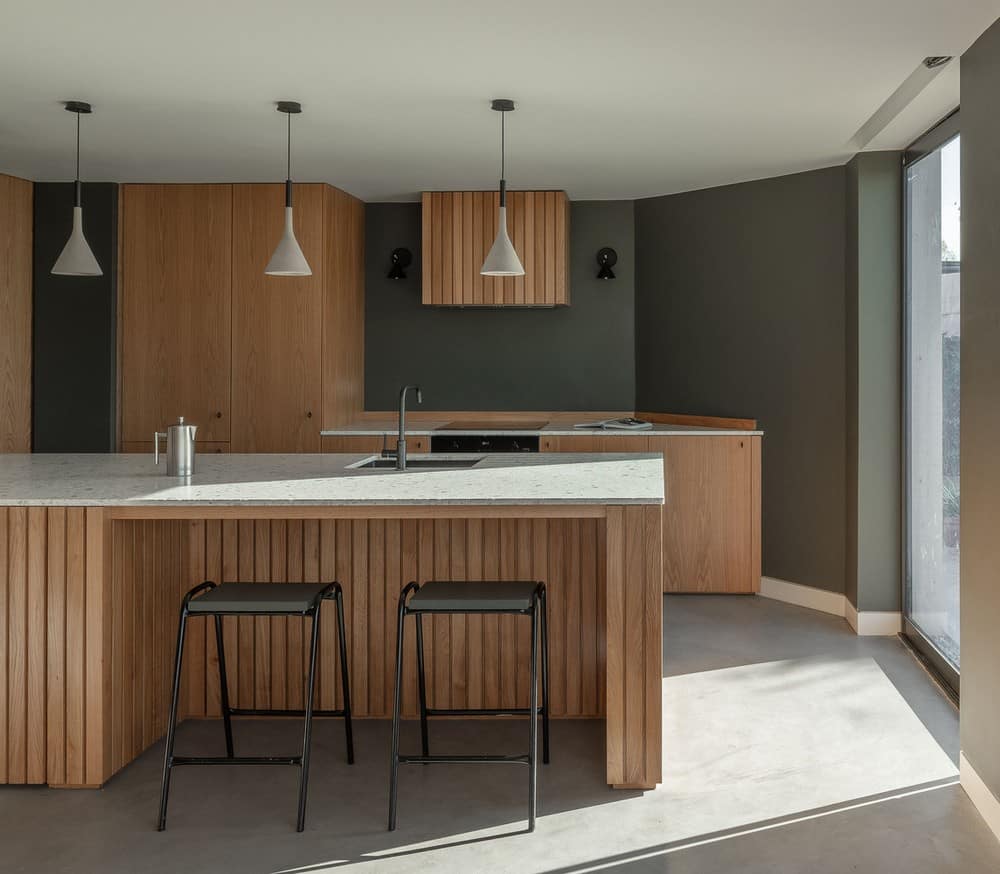
The boot room porch and hidden jib door experiment with the Japanese Shou sugi ban technique of charred wood to create a robust finish to these highly trafficked areas. The technique also renders the larch highly resistant to insect damage which is crucial as the porch is also utilized as the winter log store.
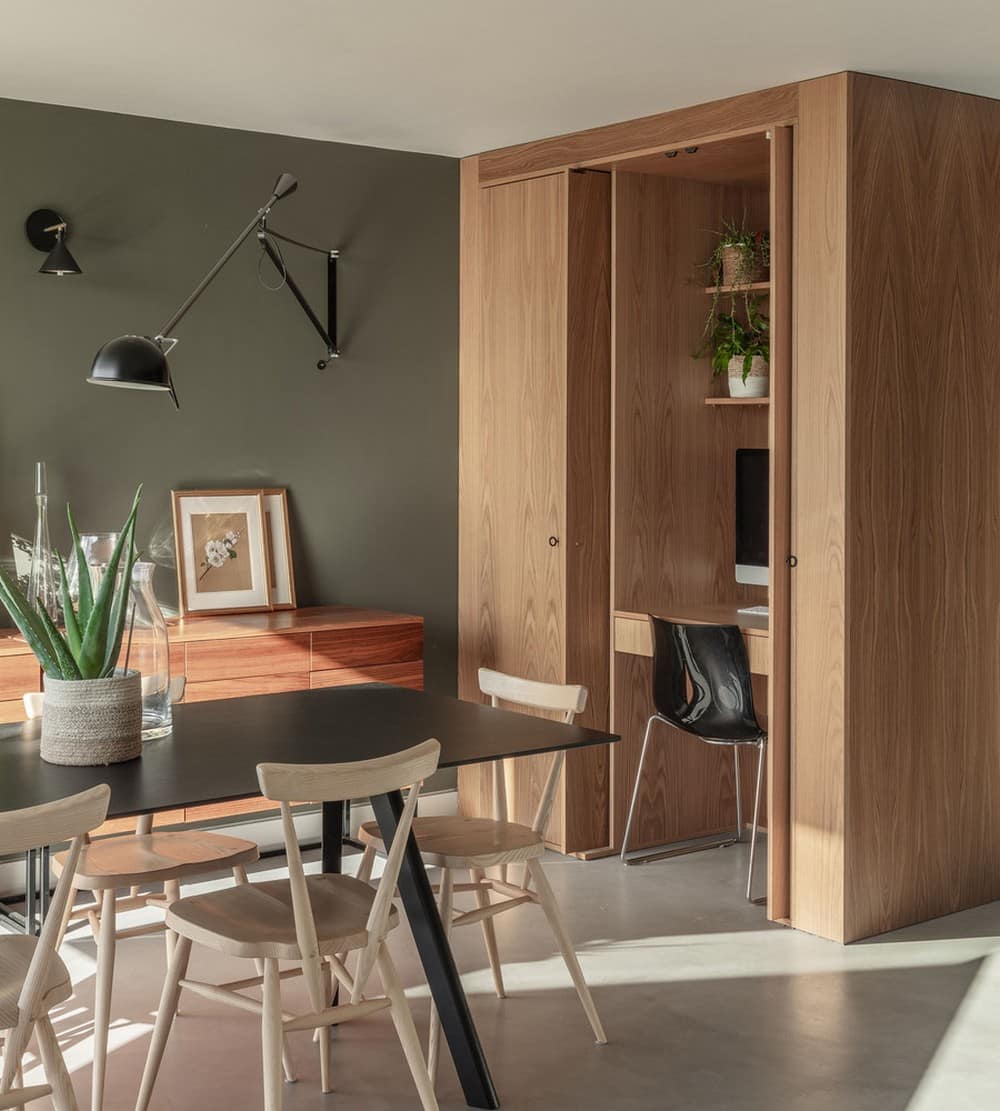
On the first floor, a new bedroom and bathroom were added. The bedroom features an oriel window that overlooks the biodiverse wildflower roof and valley below. The children’s bedroom is playful with a swing as the centerpiece, while the staircase features a slide. The material selection is honest, tactile, and crafted. The use of timber is integral, vertical Siberian larch cladding provides durability and a color-fast appearance.
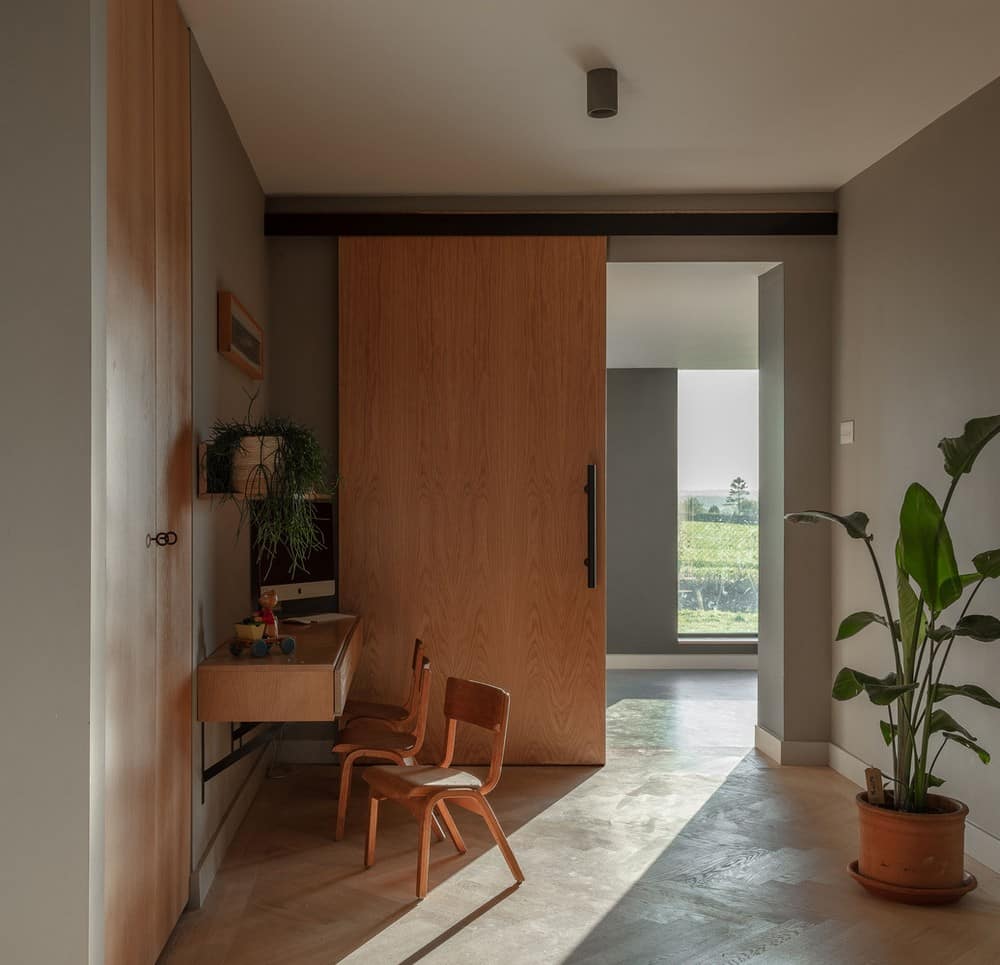
The pressure-treated timber has few knots, is easy to work with, and has little wastage. Internally, bespoke oak joinery cues the strong vertical rhythm of the façade, and the mute green color palette reflects the surrounding landscape, with calming and intimate tones framing the Cotswolds beyond.
